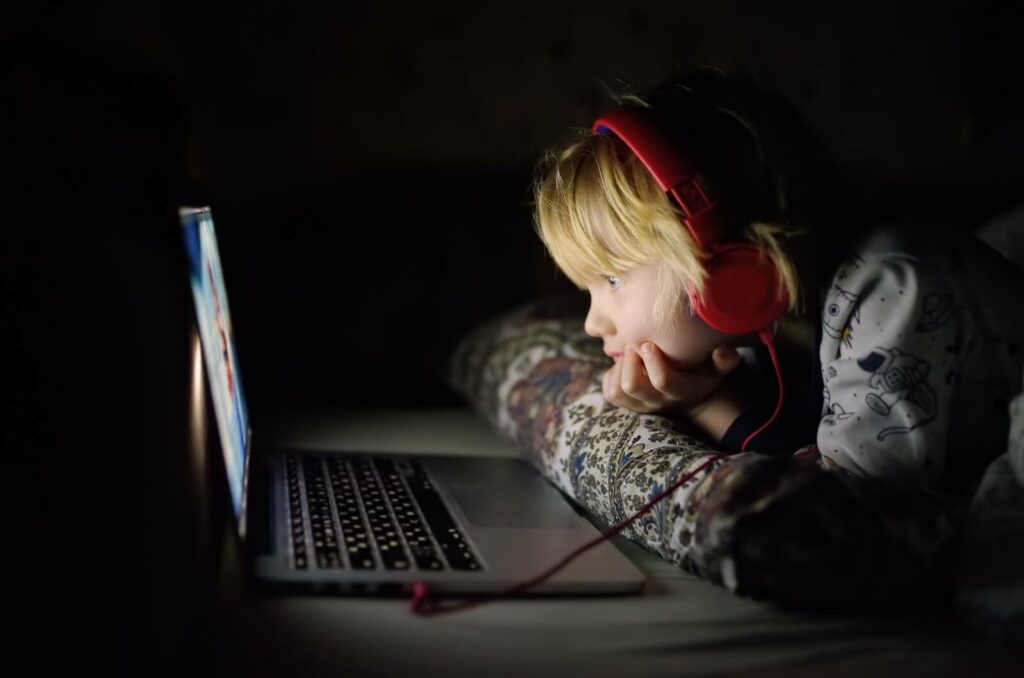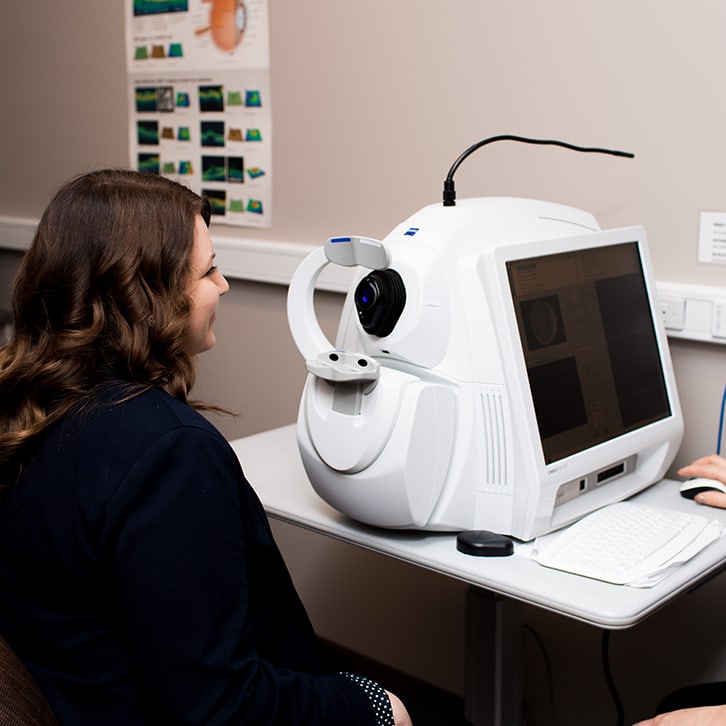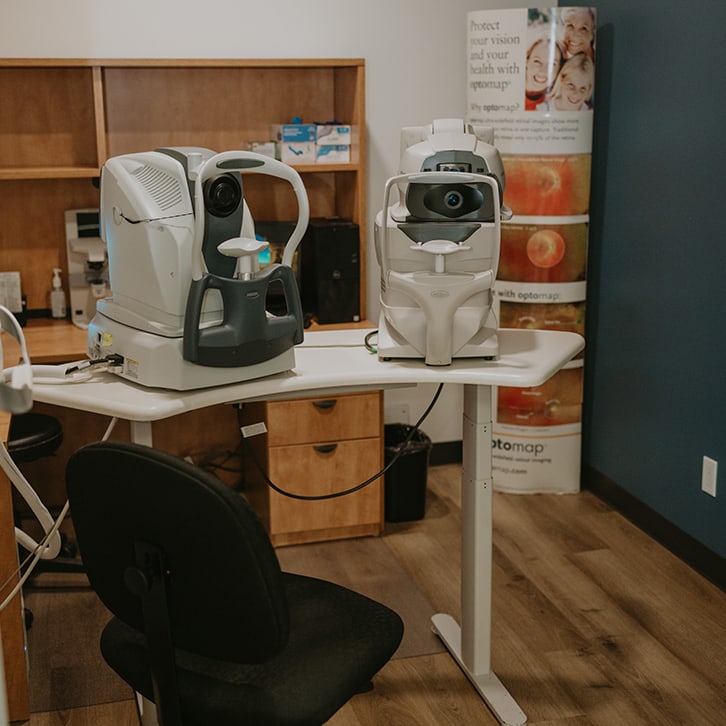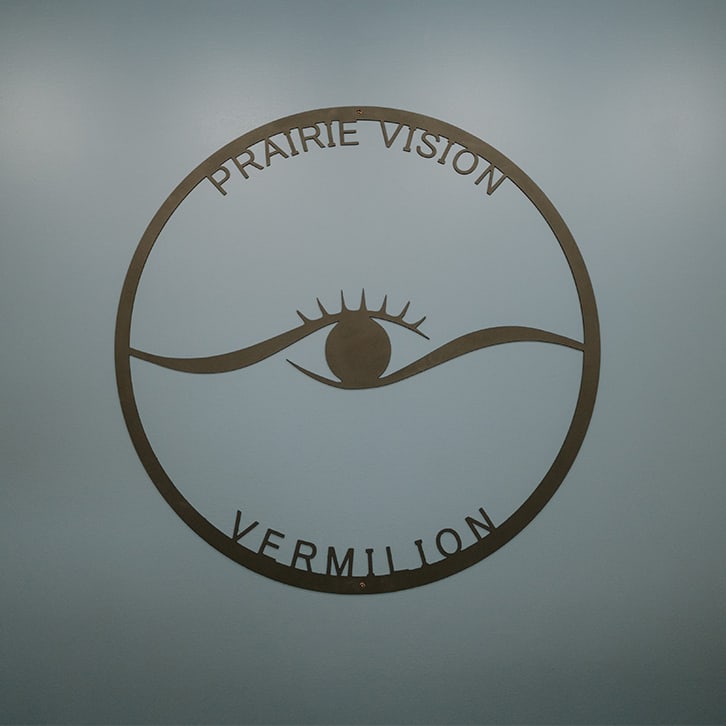As parents, it’s natural to worry when you notice unusual behaviour in your child, such as excessive blinking. While it may be a temporary habit, excessive blinking in children could indicate a vision problem, such as dry eyes, eye allergies, or the need for vision correction.
A children’s eye exam can assess your child’s vision and determine if excessive blinking is related to an underlying vision problem. With treatment, your child can enjoy clear and comfortable vision.
What Is Normal vs. Excessive Blinking?
Children, like adults, blink to keep their eyes moist and comfortable. The average blink rate for an adult is 14 to 17 times per minute. Typically, babies and children blink less often. But if your child blinks excessively, it might be time to investigate further.
One factor that can cause you to blink less is when you’re staring at a screen. Screen time can significantly decrease the blink rate to 4 times per minute. Vision discomfort and dry eyes from blinking less when using a digital screen can cause digital eye strain.
Other factors that can cause an increase in the blink rate include external reasons, such as bright lights or environmental factors, including wind, cold, and dry air. Children’s sunglasses can help protect the eyes from harsh climates and sunlight.
Common Causes of Excessive Blinking in Children
Common causes that can lead to excessive blinking in children can range from simple habits to more serious vision issues.
Dry Eyes
Dry eye is often caused by prolonged screen time but can also result from tear film or tear production issues. Decreased tear production can lead to excessive blinking to compensate for fewer tears and in an attempt to increase production. An unstable tear film lacking oil, water, or mucous, can’t lubricate or hydrate the eye sufficiently, leading to excessive blinking to increase tear volume.
Eye Strain

Excessive blinking in children can be due to eye strain. Eye strain causes include increased screen time without regular breaks, poor lighting, or the need for glasses.
Allergies
Blinking lubricates the eyes by helping spread tears across the eye’s outer surface. It also protects the eyes when they close to keep out foreign materials. Excessive blinking can be caused by eye allergies from dust or pollen, resulting in irritation and eye discomfort.
Vision Problems
Excessive blinking in children can result from uncorrected vision problems. Common refractive errors in children that cause blurry vision and excessive blinking include:
- Myopia: Blurry distance vision
- Hyperopia: Blurry near vision
- Astigmatism: Blurry, distorted vision
Eye misalignment can also cause excessive blinking. Amblyopia and strabismus are common eye issues in children and occur when the eyes don’t align properly.
The Importance of Regular Children’s Eye Exams
Early detection of vision problems can support healthy vision development in children. Regular eye exams can help catch issues before they impact your child’s learning or social interactions.
The Alberta Association of Optometrists recommends the following frequency for children’s eye exams:
- First eye exam at age 6 to 9 months.
- One eye exam between ages 2 to 5 years.
- Annual eye exams for ages 6 to 19 years.
Signs to Watch for in Your Child
Children aren’t aware of what normal vision should be, making regular eye exams crucial. Between appointments, parents can keep an eye out for the following symptoms or signs of a vision problem:
- Blinking more than usual
- Complaints of eye discomfort or headaches
- Squinting or covering one eye to see better
- Poor performance in school, possibly due to difficulty seeing the board
If you notice excessive blinking in your child, speak to your eye doctor. Explain your observations to them and include important details, including when the blinking started and other related symptoms. Some symptoms that may accompany excessive blinking are:
- Eye redness
- Watery eyes
- Eye pain
- Squinting
- Light sensitivity
Treatment Options for Vision-Related Blinking Issues
If excessive blinking is due to an underlying vision problem, your eye doctor might recommend the following treatments:
- Glasses: Prescription glasses to correct a refractive error.
- Eye drops: To treat dry eyes or eye allergies.
- Vision therapy: Individualized plan to correct or improve specific visual system dysfunctions.
How to Prevent Vision Problems in Children
Excessive blinking isn’t harmful to your child’s vision and is usually temporary. However, to ease your concerns, there are some things you can do to help prevent vision issues in your child:
- Regular breaks from screens: Encourage your child to take regular breaks from screen time by following the 20-20-20 rule—every 20 minutes, look at something 20 feet away for at least 20 seconds.
- Adequate lighting: Provide your child with sufficient lighting when reading and playing indoors.
- Outdoor play: Promote outdoor play, as natural light and focusing on distant objects can help maintain healthy vision.
Healthy Vision & Development in Children
Monitoring your child’s vision is a simple but effective way to catch potential vision problems early. If you’re concerned about your child’s blinking habits, book an appointment with Prairie Vision. We offer eye exams for children of all ages in a comforting, safe, and engaging environment to support their vision and development.






















